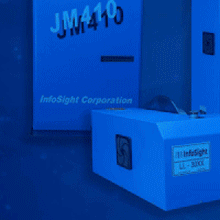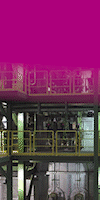worldsteel Provides Short Range Outlook for Steel in 2011, 2012
10/13/2011 - The World Steel Association is forecasting a 6.5% increase in apparent steel use in 2011, to 1,398 million tonnes, following growth of 15.1% in 2010. An additional 5.4% increase for world steel demand is forecast for 2012.
The World Steel Association (worldsteel) is forecasting a 6.5% increase in apparent steel use in 2011, to 1,398 million tonnes, following growth of 15.1% in 2010. worldsteel’s forecast, part of the group’s October 2011 Short Range Outlook (SRO), also predicts an additional 5.4% increase for world steel demand in 2012.
The Short Range Outlook is provided by the worldsteel Committee on Economic Studies, whose membership consists of chief economists from more than 40 of the worldsteel member companies. The committee met in Istanbul in September 2011 to discuss the October 2011 Short Range Outlook.
“In the first half of 2011, we witnessed sustained momentum in the recovery of steel demand globally carrying over from 2010,” commented Daniel Novegil, Chairman of the worldsteel Economics Committee. “This is despite a series of anticipated and unanticipated negative developments: the ongoing euro area sovereign debt crisis, the earthquakes in Japan, the political/social unrest in some countries of the MENA region leading to the related surge in oil prices, and the tightening of government monetary measures in many emerging economies.
“Today the global economy is facing increased uncertainty over how the ongoing turmoil in the financial markets will evolve and how it will affect the real economy,” continued Novegil. “Our current forecast for 2012 assumes that developing economies continue to drive global growth and the policy response to the European sovereign debt crisis prevents increased volatility in the equity and financial markets. In light of this global economic uncertainty, our forecast should be considered as “cautiously optimistic”.
“We expect to see growth performance varying widely across regions,” added Novegil. “The recovery of steel demand in the developed world will be slow while most of the emerging and developing world should continue to enjoy robust growth in their steel demand.”
|
|
Apparent steel use
in millions of tonnes |
Growth Rates
|
||
|
2011
|
2012
|
2011
|
2012
|
|
|
European Union (27)
|
155.0
|
158.9
|
7.0%
|
2.5%
|
|
Other Europe
|
33.0
|
34.8
|
11.3%
|
5.7%
|
|
CIS
|
55.6
|
59.8
|
14.4%
|
7.5%
|
|
NAFTA
|
120.9
|
126.8
|
9.0%
|
4.9%
|
|
Central & South America
|
47.8
|
52.4
|
4.7%
|
9.8%
|
|
Africa
|
21.4
|
23.8
|
-12.7%
|
11.0%
|
|
Middle East
|
50.0
|
53.9
|
5.0%
|
7.9%
|
|
Asia and Oceania
|
914.0
|
963.1
|
6.2%
|
5.4%
|
|
World
|
1397.5
|
1473.6
|
6.5%
|
5.4%
|
|
Developed Economies
|
392.9
|
403.0
|
5.4%
|
2.6%
|
|
Emerging & Developing
|
1004.6
|
1070.6
|
6.9%
|
6.6%
|
|
China
|
643.2
|
681.6
|
7.5%
|
6.0%
|
|
BRIC
|
777.4
|
827.1
|
7.2%
|
6.4%
|
|
MENA
|
61.0
|
66.3
|
-0.9%
|
8.7%
|
|
World minus China
|
754.3
|
792.0
|
5.6%
|
5.0%
|
China’s apparent steel use is expected to increase by 7.5% in 2011 to 643.2 million tonnes following an increase of 8.5% in 2010. In 2012, China’s steel demand is expected to maintain 6.0% growth, which will bring China’s apparent steel use to 681.6 million tonnes.
In 2011, economic growth is predicted to increase steel use in Indiaby 4.3% to reach 67.7 million tonnes. In 2012, the growth rate is forecast to accelerate to 7.9%.
Japan’ssteel use is expected to decline by 2.7% in 2011 to 61.8 million tonnes due primarily to the disruptions caused by the earthquake. In 2012 apparent steel use in Japan is forecast to show a growth of 0.8% to reach 62.3 million tonnes, 77% of the 2007 level.
A strong (11.6%) rebound in apparent steel use is forecast for the USin 2011, followed by growth of 5.2% to 93.8 million tonnes in 2012, bringing the country back to 87% of its 2007 level. For NAFTAas a whole, apparent steel use is forecast to grow by 9.0% in 2011 and by 4.9% in 2012.
In Central and South America, apparent steel use is forecast to grow by 4.7 % in 2011 to reach a historical high of 47.8 million tonnes. In 2012, the region’s apparent steel use is forecast to grow by 9.8% to reach 52.4 million tonnes, almost 28% higher than the 2007 level.
Europeancountries are continuing to show divergent recovery paths in 2011, with steel demand expected to grow at impressive rates in Germanyand Polandwhile Spainis expected to record a sluggish 1.7% recovery. Overall, apparent steel use in the EU is projected to increase by 7.0% in 2011 to 155.0 million tonnes, and by 2.5% to around 158.9 million in 2012, bringing it back to only 80% of the 2007 peak. In 2012, the growth in steel demand is expected to stall in most of the European countries with the notable exception of Poland, which is forecast to post an impressive 9.5% growth.
In the CIS, apparent steel use is forecast to grow by a strong 14.4% in 2011 and then by 7.5% in 2012. These projections will bring the region’s apparent steel use in 2012 to almost 60 million tonnes, a new high for the region.
Steel demand in MENAregion (Middle East and North Africa) is expected to fall by 0.9% in 2011, mainly due to downward revisions from North African countries. High oil prices are expected to prompt a resumption of growth for the region’s steel use in 2012 at a rate of 8.7%. The committee noted that there are considerable uncertainties to current forecasts for this region due to the unsettled political situation.
Steel demand in MENAregion (Middle East and North Africa) is expected to fall by 0.9% in 2011, mainly due to downward revisions from North African countries. High oil prices are expected to prompt a resumption of growth for the region’s steel use in 2012 at a rate of 8.7%. The committee noted that there are considerable uncertainties to current forecasts for this region due to the unsettled political situation.
The committee noted its current forecast suggests that by 2012, steel use still be around 15% below the 2007 level for the developed world, whereas steel use will be 44% above for emerging and developing economies. In 2012, the emerging and developing economies will account for 73% of world steel demand in contrast to 61% in 2007.
The World Steel Association (worldsteel) is one of the largest and most dynamic industry associations in the world. worldsteel represents approximately 170 steel producers (including 18 of the world's 20 largest steel companies), national and regional steel industry associations, and steel research institutes. worldsteel members represent around 85% of the world's steel.
The worldsteel Committee on Economic Studies, which meets twice a year, considers country and regional demand estimates to compile a global overview on apparent steel use (ASU). Projections forecast by worldsteel consider both real and apparent steel use. Apparent steel use reflects deliveries of steel to the marketplace from the domestic steel producers as well as from importers, whereas real steel use takes into account steel delivered to or drawn from inventories.








